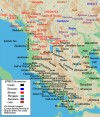Fine Coins Showcase
Antiquities Showcase
New & Reduced
Apr 23, 2024
Apr 22, 2024
Apr 21, 2024
Apr 20, 2024
Apr 19, 2024
Apr 18, 2024
Apr 17, 2024
Apr 16, 2024
Apr 15, 2024
Apr 14, 2024
Apr 09, 2024
Apr 08, 2024
Apr 07, 2024
Apr 06, 2024
Apr 05, 2024
Apr 04, 2024
Apr 03, 2024
Mar 05, 2024
Feb 24, 2024
Feb 23, 2024
Feb 18, 2024
Feb 12, 2024
Feb 11, 2024
Feb 09, 2024
Feb 01, 2024
Jan 25, 2024
Nov 19, 2023
Oct 23, 2023
Oct 22, 2023
Oct 18, 2023
Oct 14, 2023
Oct 11, 2023
Oct 07, 2023
Oct 05, 2023
Oct 03, 2023
Sep 28, 2023
Sep 26, 2023
Sep 22, 2023
Sep 21, 2023
Sep 19, 2023
Sep 18, 2023
Sep 13, 2023
Sep 11, 2023
Aug 01, 2023
Jul 28, 2023
Jul 17, 2023
Jul 16, 2023
Jul 09, 2023
Jun 26, 2023
Jun 11, 2023
May 04, 2023
May 03, 2023
Apr 06, 2023
Mar 30, 2023
Mar 29, 2023
Mar 28, 2023
Mar 26, 2023
Mar 25, 2023
Mar 17, 2023
Mar 16, 2023
Mar 15, 2023
Feb 27, 2023
Feb 07, 2023
Feb 05, 2023
Jan 18, 2023
Dec 31, 2022
Dec 15, 2022
Oct 28, 2022
Oct 09, 2022
Sep 27, 2022
Sep 24, 2022
Aug 29, 2022
Jul 11, 2022
Jun 17, 2022
Jun 14, 2022
May 30, 2022
Apr 11, 2022
Apr 09, 2022
Apr 02, 2022
Feb 04, 2022
Feb 02, 2022
Oct 05, 2021
Jun 23, 2021
Home ▸ Catalog ▸ |Greek Coins| ▸ |Geographic - All Periods| ▸ |Greece| ▸ |Epirus||View Options:   | | | | | | |


GS95936. Silver stater, Ravel Colts 22 (-/P12); Pegasi II p. 439, 8; HGC 3.1 197 (R2); BMC Corinth -; SNG Cop -, SNG Tubingen -, VF, toned, struck with worn dies, tight oval flan, weight 8.277 g, maximum diameter 22.5 mm, die axis 180o, Ambrakia (Arta, Greece) mint, c. 458 - 426 B.C.; obverse Pegasos with pointed wing flying right, A below; reverse head of Athena (or Aphrodite) left in Corinthian helmet, no leather cap or neck guard, hair in long wavy locks over neck, all within incuse square; from the Errett Bishop Collection; very rare; SOLD
Korkyra (Corfu), Island off Epirus, Greece, c. 433 - 360 B.C.


Corfu is a picturesque island near the coasts of Albania and Greece. The advantageous trade position allowed Corcyra to play an important role in Greek history. After the Byzantine Empire gradually collapsed it was ruled by Venice from 1401 to 1797, during which time the Turks laid several sieges against its impregnable Byzantine castle.GS95931. Silver stater, Fried Group III; BMC Thessaly p. 118, 64; SNG Munchen 634; Dewing 1453; HGC 6 35 (R2); SNG Cop -; SNG Tubingen -, Choice VF, well centered and struck, attractive old collection toning, scratches, obverse die wear, weight 10.871 g, maximum diameter 21.2 mm, die axis 45o, Korkyra (Corfu) mint, c. 433 - 375/60 B.C.; obverse cow left, head turned back toward suckling calf standing right below; reverse vertical double stellate pattern, divided by double line, within square double linear frame, K right, all within a circular linear border; from the Errett Bishop Collection; rare; SOLD
Epirote Republic, Epirus, Greece, 238 - 168 B.C.


In 232 B.C. the tribes of Epiros formed the Epirote League transforming the kingdom into a Republic. Over the next half century it was caught between the warring powers, Rome and Macedonia. In the Third Macedonian War, the Molossians split with the rest of Epirus and sided with the Macedonians. The outcome was disastrous; Molossia fell to Rome in 167 B.C., 150,000 of its inhabitants were enslaved, and the region was so thoroughly plundered that it took 500 years to fully recover.SH30351. Silver victoriatus, BMC Thessaly p. 90, 42; SNG Cop 126, gVF, weight 3.203 g, maximum diameter 18.9 mm, die axis 180o, Phoenice mint, 238 - 168 B.C.; obverse jugate heads of Dodonaean Zeus and Dione, monograms behind; reverse thunderbolt, AΠΕI/PΩTAN above and below in two lines, all within oak wreath; ex Tom Cederlind; rare; SOLD



REFERENCES|
Page created in 1.844 seconds.







